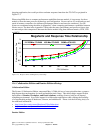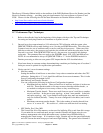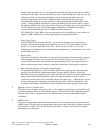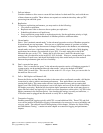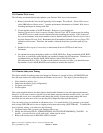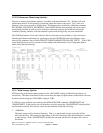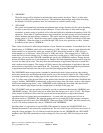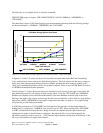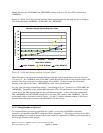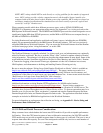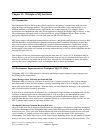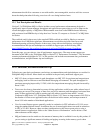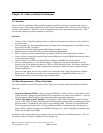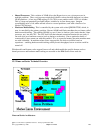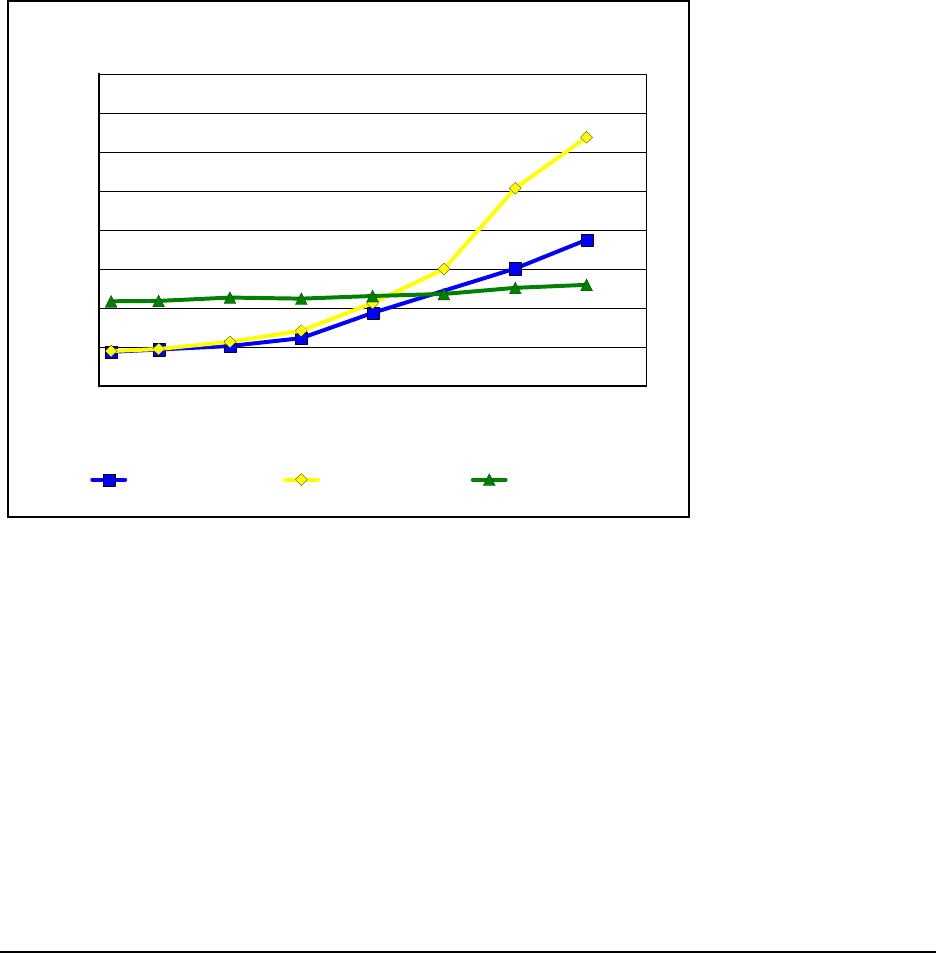
During the tests, the *DYNAMIC and *MINIMIZE settings used up to 5% more CPU resource than
*NORMAL.
Figure 11.5 below shows the response time data rather than fault rates for the same test shown in Figure
11.4 for the attributes *NORMAL, *DYNAMIC, and *MINIMIZE.
60775040 47026568 36388264 28156548 21787000
BASE POOL SIZE(KB)
0
10
20
30
40
50
60
70
80
AVERAGE RESPONSE TIME (ms)
V5R3 *DYNAMIC V5R3 *NORMAL V5R3 *MINIMIZE
V5R3 Main Storage Options Response Times
Figure 11.5 V5R3 Main Storage Options - Response Times
Notice that there is not an exact correlation between fault rates and response times as shown in Figures
11.4 and 11.5. The *NORMAL and *DYNAMIC option showed the lowest average response times at the
left side of the chart where the most main storage was available. As main storage was constrained
(moving to the right on the chart), *MINIMIZE provided lower response times.
As is the case with many performance settings, “your mileage will vary” for the use of *DYNAMIC and
*MINIMIZE. Depending on the relationship between the CPU, disk and memory resources on a given
system, use of the Main Storage Options may yield different results. As has already been mentioned,
both *MINIMIZE and *DYNAMIC required up to 5% more CPU resource than *NORMAL. The test
environment used to collect the results in Figures 11.4 and 11.5 had an adequate number of disk drives
such that disk utilizations were below recommended levels for all tests.
11.12 Sizing Domino on System i
To compare Domino processing capabilities for System i servers that use POWER5 and earlier
processors, you should use the MCU ratings provided in Appendix C . The ratings are based on the Mail
and Calendaring User workload and provide a better means of comparison for Domino processing than do
CPW ratings for these earlier models.
IBM i 6.1 Performance Capabilities Reference - January/April/October 2008
© Copyright IBM Corp. 2008 Chapter 11 - Domino 171



